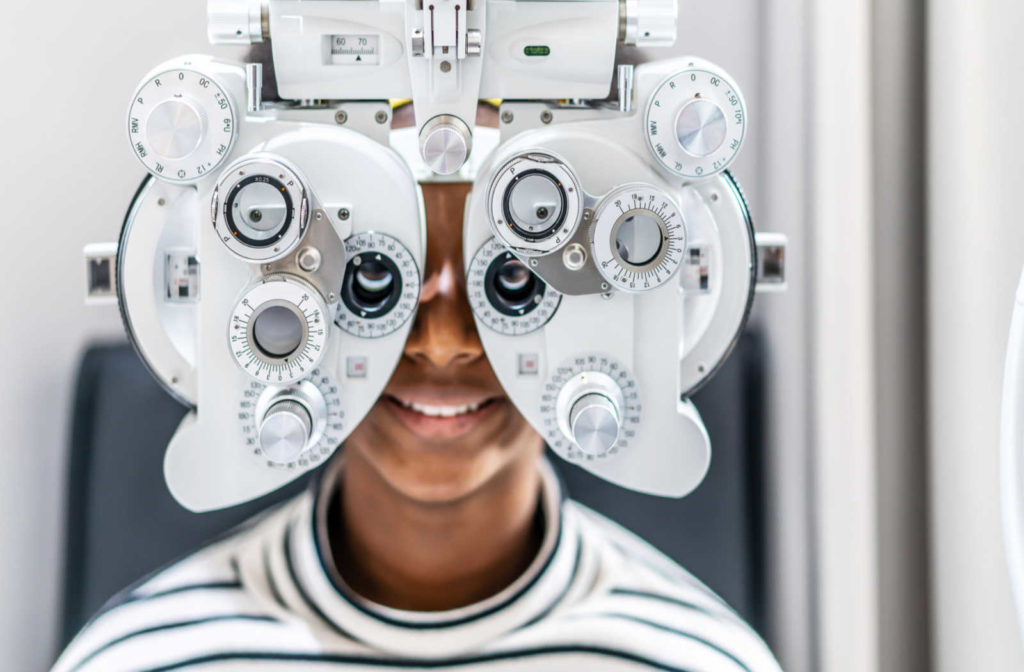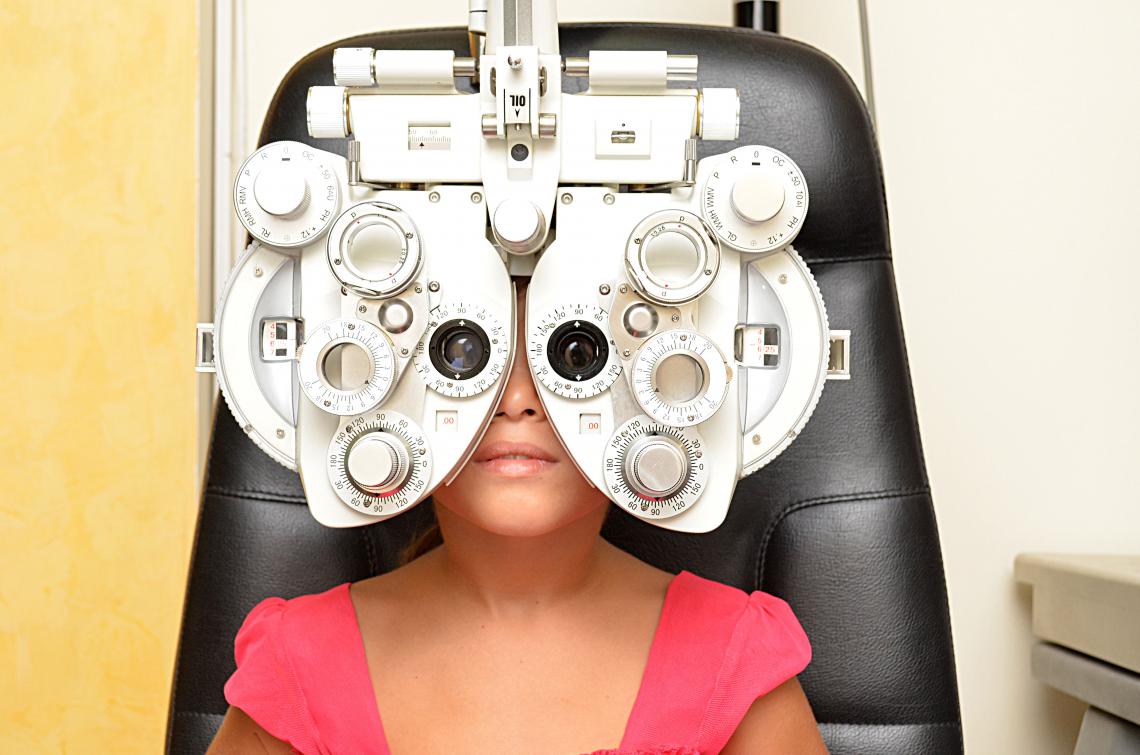Check Out the very best Optometrist Chino for Comprehensive Eye Care
Check Out the very best Optometrist Chino for Comprehensive Eye Care
Blog Article
Exploring the most recent Technological Developments in Optometry and What They Mean for Eye Doctors
In the ever-evolving area of optometry, recent technical innovations are improving just how professionals approach eye care. From the accuracy of Optical Coherence Tomography to the nuanced understandings provided by AI-driven diagnostic tools, these developments are setting new criteria in patient evaluation and treatment. Teleoptometry is positioned to redefine access, making certain that expertise goes beyond geographical limitations. As these developments permeate the technique, eye doctors are faced with the challenge of welcoming these devices to improve patient end results. The concern stays: just how will these technological changes redefine the duties and obligations within the profession?
Developments in Diagnostic Tools
Progressing the field of optometry, advancements in analysis devices have reinvented the way eye treatment professionals examine and diagnose visual impairments and ocular problems. The past years has actually witnessed significant technical innovations, enabling more precise and comprehensive examinations. Optical Coherence Tomography (OCT), for instance, offers high-resolution cross-sectional photos of the retina, permitting the early detection of illness such as glaucoma and age-related macular deterioration. This non-invasive imaging technique has come to be vital in modern optometric practice.
One more trick development is the intro of innovative corneal topography systems, which map the surface curvature of the cornea with precision. These devices are particularly useful for suitable call lenses and identifying corneal disorders. Moreover, electronic retinal imaging has actually changed traditional ophthalmoscopy, providing detailed, panoramic views of the retina that facilitate extensive aesthetic evaluations.
The advancement of wavefront aberrometry has actually also been critical, making it possible for the analysis of refractive mistakes with unmatched accuracy (Eye Doctor). This technology assists in customizing restorative lenses and improving medical end results for refractive surgical treatments. Collectively, these diagnostic improvements equip eye doctors to provide remarkable person care, making certain very early intervention and customized treatment techniques, ultimately enhancing aesthetic wellness outcomes
AI in Person Administration
Structure on the foundation of innovative diagnostic devices, the incorporation of expert system (AI) in client administration stands for a transformative jump for optometry. AI systems are increasingly employed to enhance effectiveness, precision, and personalization in patient treatment. By evaluating vast amounts of data, AI can recognize patterns and anticipate prospective eye problems, making it possible for eye doctors to tailor treatments extra effectively. This capability is critical in taking care of chronic eye illness such as glaucoma and diabetic retinopathy, where early detection and constant tracking are vital.
Moreover, AI-driven platforms facilitate streamlined client interactions and management processes. Automated organizing, virtual assessments, and personalized follow-up strategies not just enhance person fulfillment yet also maximize time administration for practitioners. These systems can triage patients based on the necessity of their problems, making sure that those in vital requirement obtain timely focus.
Additionally, AI improves decision-making by providing eye doctors with evidence-based suggestions and treatment pathways. By incorporating data from digital health documents, AI tools offer insights that educate scientific decisions, lowering the threat of errors and improving individual results. As AI remains to progress, its function in client management will likely broaden, reshaping the landscape of optometric care.
Advancements in Retinal Imaging
In the realm of optometry, retinal imaging has witnessed impressive technical improvements that are boosting analysis capacities and client treatment. Technologies such as Optical Coherence Tomography (OCT) and fundus photography have transformed just how eye doctors visualize and analyze the retina. OCT, specifically, supplies high-resolution, cross-sectional photos of the retina, enabling the thorough evaluation of its layers. This ability is important for very early detection and management of problems like glaucoma, diabetic person retinopathy, and age-related macular degeneration.
Improved imaging modalities like OCT angiography are further refining analysis precision. This non-invasive strategy maps blood flow in the retina, offering vital understandings into vascular health without the requirement for color injections. Additionally, adaptive optics modern technology is being integrated right into retinal imaging systems to remedy eye aberrations, supplying unprecedented picture clarity. Such improvements promote the identification of min retinal changes that could symbolize Visit This Link condition development.
Furthermore, advancements in expert system are augmenting retinal imaging by making it possible for automated analysis of large datasets. These systems assist optometrists in determining patterns indicative of pathology, therefore enhancing diagnostic accuracy and effectiveness. Jointly, these developments are transforming retinal imaging right into a keystone of contemporary eye care, improving results and expanding healing opportunities.
Teleoptometry's Growing Role
Teleoptometry is significantly becoming a crucial element of eye care, driven by advancements in data and diagnostic tools. As optometry accepts electronic improvement, teleoptometry promotes remote appointments, permitting eye doctors to expand their solutions past typical borders. This is particularly valuable in underserved and country areas where access to specialized eye care is typically limited. By leveraging high-resolution video conferencing and advanced retinal imaging, eye doctors can carry out comprehensive eye examinations from afar, making certain prompt diagnosis and therapy.
The integration of expert system (AI) further boosts teleoptometry, allowing the evaluation of aesthetic information and aiding in the discovery of ocular conditions such as glaucoma and diabetic person retinopathy. AI-powered formulas can rapidly interpret intricate imaging data, providing eye doctors with beneficial insights that strengthen medical decision-making.
In addition, teleoptometry supports connection of care with seamless integration with digital health and wellness records (EHRs), enabling eye doctors to maintain detailed patient histories. This makes certain that clients receive constant and individualized care also when seeking advice from with different specialists.
Regardless of these benefits, difficulties continue to be, including making sure information security and managing individual expectations. Nonetheless, teleoptometry stands for a considerable more tips here stride in the direction of more accessible, efficient, and patient-centered eye treatment. As modern technology progresses, its role is poised to expand even more.

Future Trends in Eye Care
A myriad of cutting-edge fads is readied to improve the future of eye treatment, driven by technical developments and the evolving demands of people. One substantial trend is the assimilation of man-made knowledge (AI) in diagnostics, which guarantees to enhance the accuracy and efficiency of eye exams. AI algorithms can analyze large amounts of data from retinal pictures, potentially finding conditions like diabetic retinopathy and glaucoma earlier than typical techniques.
Moreover, individualized medication is gaining grip in optometry, with genetic testing informing personalized treatment strategies. This approach intends to enhance individual end results by customizing treatments to individual hereditary profiles. Wearable technology, such as clever contact lenses, is additionally coming up, offering real-time tracking of intraocular pressure or sugar degrees, hence providing continual insights right into systemic and ocular wellness.
The fostering of increased truth (AR) and online fact (VIRTUAL REALITY) in training and individual education is one more emerging trend. These modern technologies use immersive experiences that can improve understanding and skills both for patients and eye doctors. As these trends develop, eye doctors must stay abreast of technical innovations to give sophisticated treatment, making certain enhanced patient results and contentment in the vibrant landscape of eye care.
Conclusion

Collectively, these diagnostic improvements encourage optometrists to deliver superior client care, making certain very early treatment and tailored therapy techniques, eventually enhancing visual health and wellness results.

As these technologies proceed to evolve, eye doctors have to adapt and incorporate them right into method, eventually enhancing operations effectiveness and elevating the standard of eye care delivered to clients.
Report this page